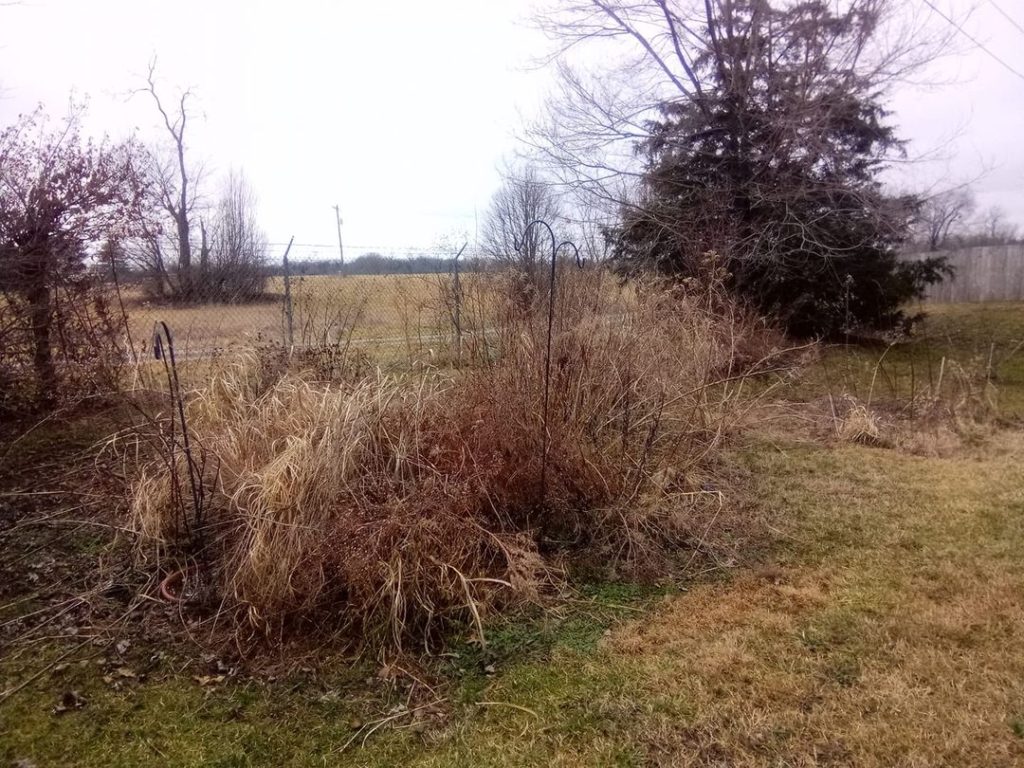Last month, The Lady Slipper introduced a new column, Kentucky Yard Restoration. In that premiere article, Karen Cairns describes her restoration project as a labor of love. I think most of us can identify with that statement.
Years ago, I planted natives for the birds and butterflies, without realizing that I was providing habitat for many other Kentucky creatures. I lived in an ordinary neighborhood with a few old trees, a small back yard, and houses in every direction but up. The birds came. The butterflies came. But so did the frogs, box turtles, rabbits, raccoons, and bees. I still get goosebumps when I remember finding that first bullfrog.
One morning, I found a neighbor in my backyard wandering around looking at it all. He asked how we installed the small pond–and when I say small, I mean it. But it was cozy enough for the green frog who took up residence there.
Each August, the hummingbirds were so numerous and bold, they would fly between our heads while sitting in our bench swing. I once had one check me out by hovering about a foot from my face and squeaking at me for a bit. What she was telling me, I don’t know, but I cried. I just stood there and cried because the interaction was so amazing.
Over the years, I noticed that some species were more abundant than others, and we began referring to things that happened during “titmouse summer,” “red-winged blackbird summer,” and so on. We had a pair of rose-breasted grosbeaks that stopped by Mother’s Day weekend without fail for many years. A red-winged blackbird flew in at the same time every day to chat with our dog. After a hard storm, a pair of bluebirds took refuge until they were strong enough to rebuild. They returned often to feed their offspring.
When we moved, I started over. Our new home had a Bradford pear tree and some holly bushes. If you think I despaired, you are wrong. I was excited, and I started all over again. After ten years, my home is surrounded by trees, shrubs, flowers and grasses–almost all native. The backyard bumps up to a field that connects with a wild and protected area. My backyard blends right into that field. Some might call it ugly; I think it’s beautiful. It is habitat, and now I take stewardship seriously–so seriously, that my mantra has become “Every yard matters.”

In early spring, it’s mowed. Throughout the spring, summer, and fall, native blooms fill it.
If we can convince a few of our neighbors to return just a small section of their yards to the wild, we can reconnect to the wild in a way most of us think impossible. Imagine the corridors of habitat we could create. Many will be slow to adopt to this idea, but we must try. We have no choice if we are to become the stewards we are meant to be. I want my children, my grandchildren, and my great-grandchildren to know the joy of discovering a frog in their small pond. We don’t all start out with stewardship as our end goal, but that’s where a restoration project takes us.
We want to share your yard reclamation stories. You don’t have to be a great writer–we only need your passion and your story. Please consider sharing your Kentucky Yard Restoration story. You can contact us at LadySlipper@knps.org.
